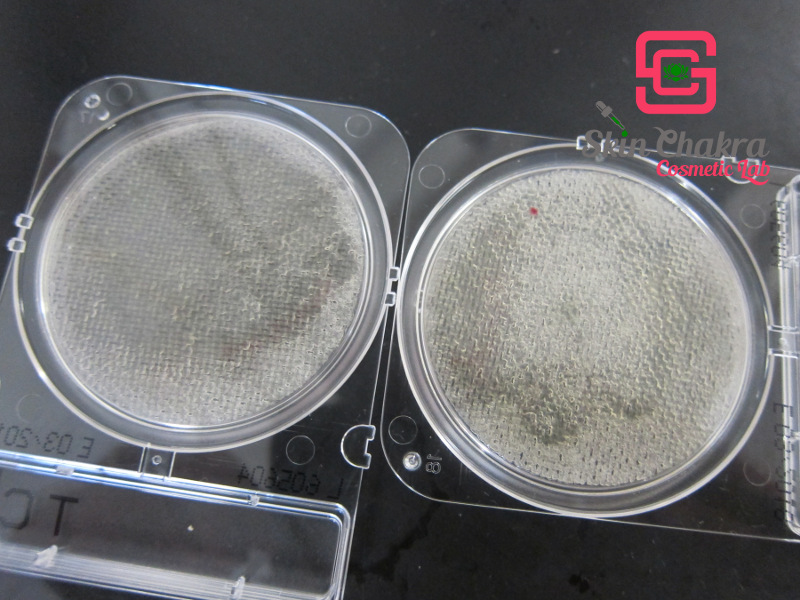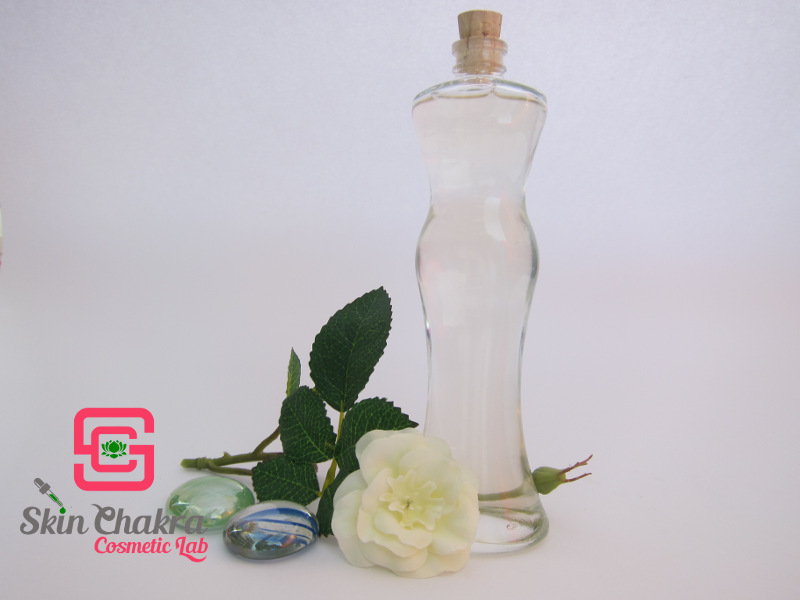
Sonntag, 22. Oktober 2017
Bye bye acne facial toner

If you have read our last blog post with our new active ingredient dermosoft decalact sebum you're probably waiting for more to come.
The second step after skin cleansing is applying a toner and here we are with a tutorial for making a soothing and toner with an active ingredient that helps against visible and large skin pores, excessive sebum production, skin redness and inflammation and acne.
dermosoft decalact sebum is a lipophilic ingredient and can not be incorporated into water based products without any solubilizer.In this formulation, we are using our new natural solubilizer Symbiosolv clear plus . This solubilizer is going to replace both Symbiosolx XC and Symbiosolv clear from next year. Since all solubilizers are surfactants, they will foam more or less in the product. The trick of working with solubilizers is to keep to the golden rule:
As much as needed
As little as possible
In plain English it means that you need to tweak and adjust the formulation so that you use the minimum required quantity of the solubilizer to keep your essential oils and other lipophilic ingredients in the solution (not on @ room temperature but at reduced and elevated temperatures as well).
Just like our previous formulation, the cleansing foam for acne-prone skin, I have blended anti-inflammatory and soothing hydrosols and essential oils for this formulation.
I have been working with thyme hydrosol for years to improve acne-prone skin and it is my very first choice for acne condition. It has mild cleansing, disinfecting and antibacterial properties. If I were to choose only one hydrosol for acne preparations I would definitely select thyme. Yarrow is known for its anti-inflammatory and soothing properties. And melissa, oh melissa: it is such a gabulous hydrosol with soothing and antibacterial properties. I think if you only blend these three hydrosols (ours are preserved) and apply it over skin as a toner, the skin conditions would be visibly improved after a few applications.
For my essential oils I focused on soothing, antibacterial and anti-inflammatory properties rather than on scent. Wintergreen essential oil is a known remedy because of its salicylate content. Patchouli is one of the most soothing essential oils with additional antibacterial properties. Cedarwood is calming and improves skin blemishes. Finally I have added grapefruit oil for its mildness and for its nice citrussy scent. This is a distilled oil and is free of furocoumarines and hence free of phototoxicity risk.
Formulation:
| Phase A | |
| Organic melissa hydrosol | to 100,0% |
| Organic thyme hydrosol | 30,0% |
| Organic yarrow hydrosol | 25,0% |
| Sodium PCA | 1,0% |
| Vegeluron | 3,0% |
| Hydroglyceric extract of dandelion and comfrey | 2,5% |
| Sodium lactate | 2,0% |
| Panthenol | 1,0% |
| Plant based pentylene glycol | 4,0% |
| Natural betaine | 0,5% |
| Organic aloe powder | 0,2% |
| Allantoin | 0,2% |
| Dermofeel PA-3 | 0,1% |
| Phase B | |
| dermosoft decalact sebum | 2,0% |
| Organic grapefruit oil | 0,2% |
| Organic Wintergreen oil | 0,1% |
| Organic Cedarwood oil | 0,1% |
| Organic Patchouli oil | 0,1% |
| Symbiosolv clear plus | 3,0% |
| Phase C | |
| Dermosoft 1388 eco | 2,5% |
| Versatil BL | 0,5% |
| Sodium citrate | 0,5% |
Procedure:
1- Blend phase A and phase B separately at room temperature. If you have a magnetic stirrer that would make your life much easier for blending phase A but it is possible to nicely blend everything with a spatula or glass rod if you don't have any magnetic stirrer.
2- Slowly add phase B to phase A and stir gently.
3- When all phase B is added to phase A and everything is homogenous measure the pH. We generally prepare a 10% solution in distilled water for pH measurements. In our case, the pH was about 5,2 and that was OK to add the preservative.
Make sure the pH is in the range of your preservative as you add your preservative
4- Add the preservative and re-measure the pH. In our case it didn't change a lot and it was 5,28 after adding the preservative.
5- The supplier of dermosoft decalact sebum recommends buffering products with 0,5% Sodium citrate . Otherwise the pH might drop over time and that will have a negatice impact on the stability of the product. We have been working with dermosoft decalact sebum only since a couple of months. Sofar we have not observed any drop in pH but it is too soon to make a decision. This is why we added 0,5% Sodium citrate to the toner. If you decide to avoid Sodium citrate make sure you keep an eye on your prototype formulations and check the pH every couple of weeks to see whether there is any need to add any Sodium citrate or not.
Anyway, in our case, adding Sodium citrate slightly increased the pH and brought it to 5,39 which is perfectly in our desired range.
The toner is quite transparent and homogenous (even after storage at low and high temperature)
6- Take your micro kit samples (microbial testing) and take your stability samples.

7- Fill the rest in a suitable bottle.

It's your turn to start working with this active ingredient. Feel free to send us your questions and we'll be at your disposal. If you post any photos on Instagram, don't forget to tag @SkinChakra.

